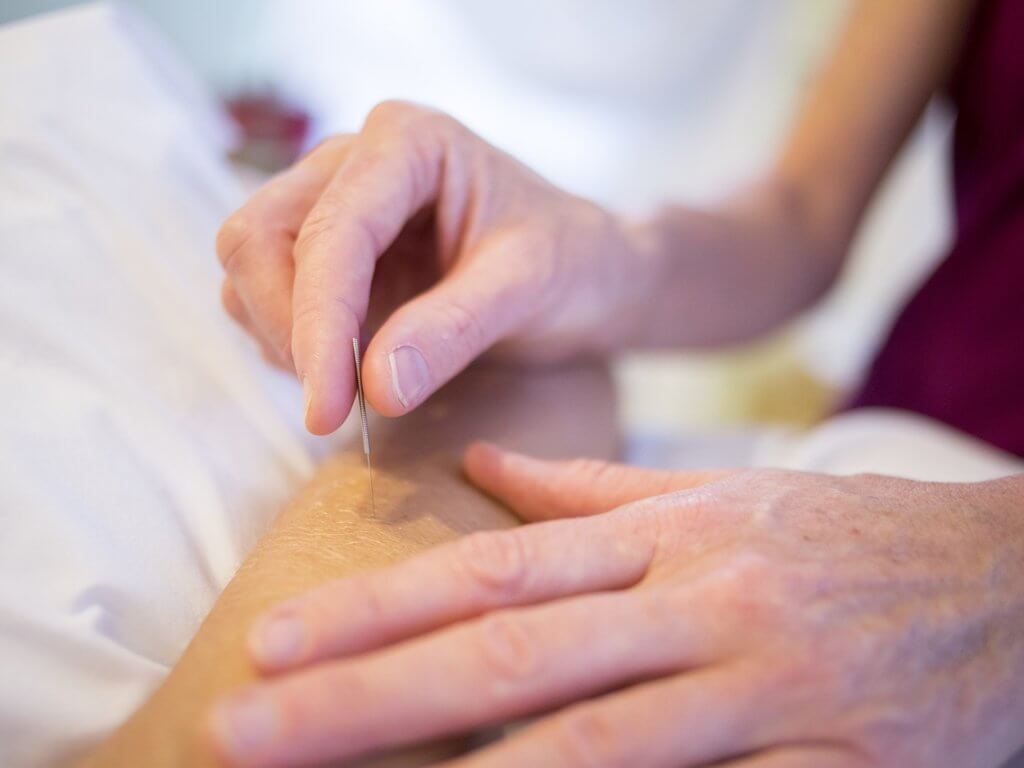
Acupuncture based on traditional Chinese medicine
 03. 06. 2020
03. 06. 2020

Acupuncture (from the Latin acus = needle and punctum = sting) is an alternative treatment method based on traditional Chinese medicine. The age of this treatment method cannot be determined exactly, but it is assumed that it has roots already in the Stone Age. The first discovered acupuncture needles were made of bone and their estimated age is 7000 years. The method was most developed in the 7th century in China, where it was recognized as an independent medical field.
Acupuncture consists of the time-limited application of thin needles to specific points on the surface of the human body. From the point of view of modern science, its principle is not fully explained, but according to many results, it demonstrably works. Therefore, today it is considered a medical discipline that deals with the prevention, diagnosis and treatment of mainly functional disorders of the body. Doctors consider it an alternative treatment that is suitable for the treatment of pain, but not the causes of the disease.
History
Acupuncture is an old healing technique used in China for thousands of years. It has its roots in ancient Chinese Taoist philosophy, which is based on the fact that the life energy of qi flows through the body. Another part of this belief is the belief that all concepts have their opposites (hot / cold, day / night, male / female). Opposite but complementary forces bear the names of yin and yang. These two components are contained in everything and form the essence of any existence. It is believed that yin and yang together create a balance. As long as both forces are balanced, we are healthy. However, if their balance is disturbed, either by ourselves or by external influences, we feel unhappy and it can lead to an outbreak of the disease.
The principle of Yin-Yang is based on Taoism. This philosophy describes it as two opposite constantly competing elements, which, however, cannot exist without each other. Their inner struggle forms the life energy - qi.
The feminine element of Jin includes the negative spectrum of energy: darkness, cold, calm, night. In terms of treatment, this includes the so-called full organs, which perform resorption - processing and storage of substances: heart, lungs, liver, kidneys, spleen. Too much Jin energy can cause fatigue, fluid retention, or tingling.
The male element Yang is the opposite, that is, positive energy: light, heat, activity, day. It has the so-called hollow organs that receive nutrients and excrete residues: stomach, gallbladder, intestines, bladder. Too much of this energy can cause migraines, high blood pressure or other acute pain.
It is important to realize that due to its physiological function, each organ has a certain share of Yin and Yang. They merge into each other and transform. A healthy organism has these principles in balance and their energy flows through acupuncture pathways = meridians. If this condition is disturbed for a long time, the body becomes ill. Acupuncture tries to prevent imbalances or reduce their causes.
Today's interpretation
The explanation of the effects in modern medicine is based on current knowledge of the nervous system of the human body. There is an extensive network of nerve fibers under the skin. Larger neural trunks occur near the meridians, where most of the acupuncture points are located. Nerve fibers, among other things, carry information from all body organs and stimuli from the environment. If the stimulus comes from a damaged organ, the alarm signal ends in the cutaneous nerve ending. We feel it as a pain. The essence of the theory is the assumption that pain refers to the affected organ anywhere in the human body and does not relate directly to the place where we feel the pain. For example, stomach pain is reflected on the skin of the upper abdomen and the adjacent back. The connection between the affected organ - the source of the problem - and the site of pain is explained by the fact that the two sites are interconnected by nerve fibers.
There are about a thousand acupuncture points on the body, which are stored along the meridians. We recognize 12 main meridians, each related to a body organ. The meridians run throughout the body (across the torso, lower and upper limbs) and end at the tips of the fingers and toes. For example, the path of the liver runs from the diaphragm, through the inner surface of the left foot to the thumb.
How acupuncture works
The ancient Chinese believed that what brought relief was the balance of yin and yang energies. Modern scientific studies offer at least two different theories. The theory of gates assumes that there are reflex mechanisms in the nerve pathways that can prevent the transmission of a painful sensation, similar to closing a gate. This reduces the pain, even if the cause persists. Acupuncture works on the principle of closing these gates.

Another theory explains the success of acupuncture by the principle of making hormones called endorphins. These hormones are made in the human brain and are designed to relieve pain. The effect of endorphins is much stronger than, for example, the effect of morphine. There is now evidence that acupuncture can induce the release of endorphins. These are then flushed out into the brain, where they block the transmission of pain signals. This theory makes it possible to explain the analgesic effects of acupuncture and its ability to induce relaxation and well-being. However, no theory has yet been able to explain some of the reports of the miraculously healed.
Acupuncture applications
The doctor first asks the patient about the problem and performs an examination. Special attention is paid to places with increased sensitivity, measurement of the wrist pulse, signs of tension and fluctuations in body temperature. Additional information is often provided by examination of the tongue, iris and feet. On the basis of these examinations, it is possible to determine the diagnosis either in the spirit of conventional medicine or according to the classical conception by determining the energy balance disorder chi.
The treatment then consists in applying needles, massage or heat to certain body points.
Heat treatment is called moxibus. It consists in warming up the acupuncture points with a lit moxib cigar. For the production of cigars, wormwood fiber is mainly used, which, after ignition, gradually generates radiant heat until an unbearable heat. The selected points are heated from a distance of 1 to 1,5 cm. Electrical devices are also often used for heat treatment.
The choice of a suitable acupuncture point depends on the condition and type of patient. It can vary from one person to another and from day to day depending on changes in the patient's condition. Likewise, there are different numbers of applied needles - from one to twenty or more; the duration of application is at the discretion of the therapist. The success of the treatment depends on many circumstances and on the patient's lifestyle. The only risk of treatment is that acupuncture used recklessly can mask the symptoms of a serious illness.
Benefits of acupuncture
Acupuncture can be used not only to relieve pain, but also in a wide range of other problems: headaches, rheumatic pain, digestive problems, asthma, high blood pressure, insomnia, anxiety and menstrual problems. It is also used during childbirth and even during operations.
Acupuncture also brings a feeling of relaxation, well-being and peace. For this reason, it is a suitable treatment and prevention tool for many diseases caused by stress in our busy society. However, acupuncture is not a panacea. It is not suitable for people who are at increased risk of infection (severe diabetics or people taking immunosuppressive medicines) or for people with increased bleeding, such as haemophilia.
Acupressure
Acupuncture can only be performed safely by a specialist. Acupressure is more suitable for home use.

During acupressure, appropriate pressure is applied to certain points on the patient's body. These points may not necessarily be the same as the part of the body we are treating, sometimes they may be quite far from the affected area. For example, pressure on the meridian points, which runs through the foot, can be used to relieve headaches.
Acupressure is tempting because even its very superficial knowledge is enough to treat some minor problems. For example, toothache will help relieve the strong pressure on the tsubo point (one of the 361 acupressure points) that is located in the corner of the mouth. However, it does not address the cause, it only suppresses the symptom. Gentle pressure around the eyes and forehead can relieve headaches and sinus pain. Squeeze the inner corners of the eyelids, run lightly along the eyebrows and push on the bone at the end.
Tips for children from the Sueneé Universe e-shop
Wolf-Dieter Storl: Shamanic Techniques and Rituals
Shamanic techniques and rituals, merging with nature - the author knows all about it Wolf-Dieter Storl tell in great detail. Get inspired by these rituals even in today's hectic times and discover peace within yourself.






 6
6